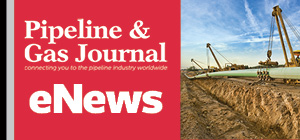Pipelines Help U.S. Electric Generation Gas Emissions Reach Lowest Levels Since 1990
Consumer Energy Alliance (CEA) has released a report titled, “Increased Environmental Benefits from Pipelines & Energy Development for Nation and New York,” highlighting improvements in air quality that have been made possible by the shale energy revolution and America's safe and reliable pipeline network. CEA’s report found that families across the nation are enjoying lower prices and enhanced energy security, as well as cleaner air – all of which were made possible by pipelines.
Highlights from the CEA report include:
- From 2005-2015, natural gas use across the United States increased 24 percent while federal clean air data shows a dramatic drop in pollution: sulfur dioxide (SO2) – down 66 percent; fine particulate matter – down 34 percent; and nitrogen oxide (NOX) – down 20 percent.
- US greenhouse gas emissions from electricity generation are down to their lowest levels since 1990.
- Total U.S. greenhouse gas emissions are down 13 percent from 2005 levels.
- New York relies on natural gas to provide 44 percent of its power needs. According to federal air quality data, emission reductions for harmful pollutants like SO2 and NOX dropped by 98 percent and 87 percent, respectively, from 2000 to 2016 in New York.
- More pipeline infrastructure is needed to meet continuing demand in Downstate New York and to support the deployment of more renewable power options in order to keep emissions down.
“This report highlights the often over-looked benefits our communities are receiving because of the U.S. energy revolution and enhances infrastructure and pipelines,” Mike Butler, CEA’s Mid-Atlantic Director, said. “We believe in a balanced and constructive all of the above energy policy that utilizes all of our resources – both conventional and renewable – but for far too long we’ve let activists lead a one-sided conversation with the public on energy development and delivery; these results speak for themselves, these incredible gains in air quality are a direct result of having pipeline infrastructure that can bring energy to where it’s needed.”
Related News
Related News

- Enbridge Plans 86-Mile Pipeline Expansion, Bringing 850 Workers to Northern B.C.
- Intensity, Rainbow Energy to Build 344-Mile Gas Pipeline Across North Dakota
- U.S. Moves to Block Enterprise Products’ Exports to China Over Security Risk
- 208-Mile Mississippi-to-Alabama Gas Pipeline Moves Into FERC Review
- Strike Pioneers First-of-Its-Kind Pipe-in-Pipe Installation on Gulf Coast with Enbridge
- U.S. Pipeline Expansion to Add 99 Bcf/d, Mostly for LNG Export, Report Finds
- A Systematic Approach To Ensuring Pipeline Integrity
- 275-Mile Texas-to-Oklahoma Gas Pipeline Enters Open Season
- LNG Canada Start-Up Fails to Lift Gas Prices Amid Supply Glut
- Kinder Morgan Gas Volumes Climb as Power, LNG Demand Boost Pipeline Business




Comments